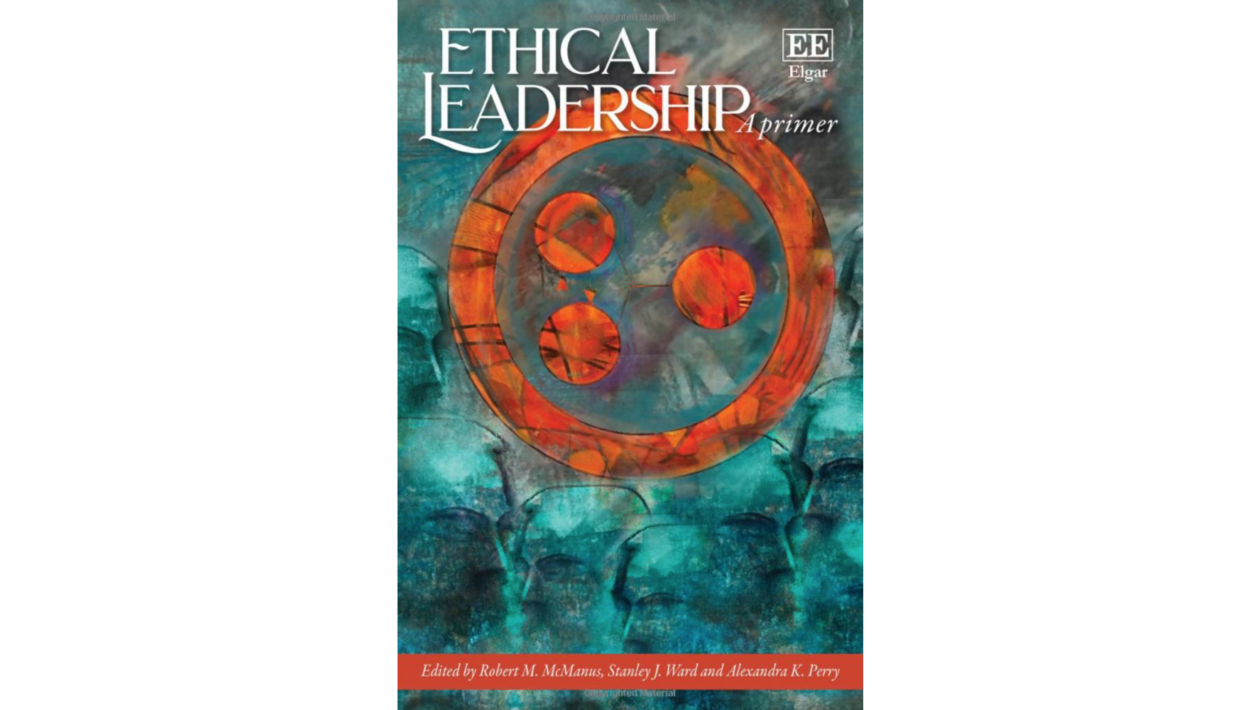By Robert M. McManus, Stanley J. Ward, and Alexandra K. Perry
Northampton, MA: Edward Elgar Publishing (2018)
Paperback
Reviewed by MARCELO FALCONIER
Ethical Leadership: A Primer addresses an issue that typically manifests in two very different fields: leadership and ethics, with leadership tending to be studied from a more practical perspective, and ethics by humanities and philosophy. These fields are historically disconnected and thus attract different readers. The editors argue the need to connect both topics as leadership is not neutral, and ethical leadership requires awareness of the frames we are using for evaluation and decision-making. This book requires a change in thinking for readers who come from traditional leadership and organizations, since some areas of the first sections in the book are quite philosophical. For students and professors in humanities and philosophy, the book may seem plain and sometimes oversimplified. However, it can be found useful as an attempt to explain philosophical topics to readers more concerned with practical issues. The relevance is found in the plain language, the cases and examples from real life, and the permanent connection to leadership.
In the introduction, the editors explain their approach to leadership using the Five Components Model introduced by Gama Perruci and developed by McManus and Perruci. To the more common elements of analysis—such as the leader, the follower and the goal—they add context and culture as crucial factors. As a South American professor, I find these additions appropriate after witnessing the failure of the extrapolation of many models that were successful in some companies but that did not consider the weight of cultural values and context.
The book is divided into two sections. The first is focused on ethics, and the second is centered on leadership. Nevertheless, the sections are well connected. The first is better connected than the second, addressing the Five Components Model case study in each chapter to connect the main ethical concepts.
One might disagree with the selection of the topics in the section on ethics; however, the selections address a wide range of ethical positions, especially those that influence more individuals’ choices in this area of the world. It starts by addressing two contrasting perspectives such as Kant and utilitarianism. This contrasting strategy is repeated in the next chapters. From there, the authors cover what they called virtue ethics and ethical egoism. The proportion dedicated to Ayn Rand may very well be justified due to her influence in the business environment.
The chapter on universal ethics addresses contemporary social approaches and is, again, followed by a chapter on cultural relativism. The divine command theory would be one of the most controversial chapters, not only for the inclusion of religion in the scenario but for the inevitable bias on an approach by which many Christians will not feel adequately represented. However, that is almost inevitable in a text that is not comprehensive, and readers will see the same problem when they address complex thinkers such as Kant and Rawls. That is a permanent risk of an introductory text that does not intend to bring a fair and in-depth approach to each line of thought.
The overlapping between chapters is inevitable. Nevertheless, it is controlled more than satisfactorily for a collective text.
The second section focuses on leadership and is also connected with the Five Component Model, showing how the different approaches in leadership relate more closely to components of that model. This section does not relate to the first section as well as it could, but some of the connections are established in the conclusion. Additionally, the chapters are connected within the section, starting from the focus on the leader and his values, and opening to the rest of the components of the model, i.e., followers, goals, context, and cultural values and norms.
The book is designed as an introductory text for college and university students. Therefore, the more advanced reader must be patient with basic and introductory explanations. Nevertheless, I would suggest this book for ethics professors. I have never found a book before that explains Kant and uses a company like Apple for a case study. Besides its clarity and didactic approach, the most significant merit of the text is that it accomplishes the stated goal of helping leaders to reflect on the ethical implications of their actions. It creates a meaningful connection between ethics and leadership and is presented in such a way that abstract concepts can influence practical and contextual decision-making in organizations.
MARCELO FALCONIER is the dean of the College of Education at Universidad Adventista del Plata in Argentina.

